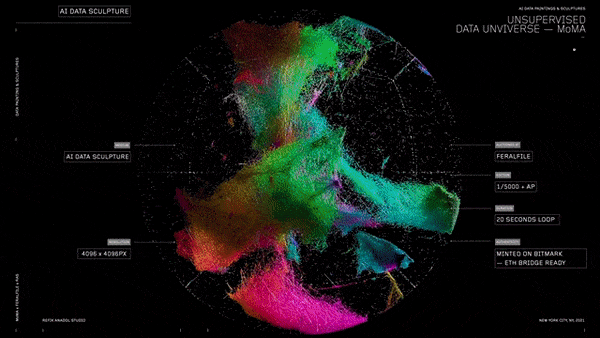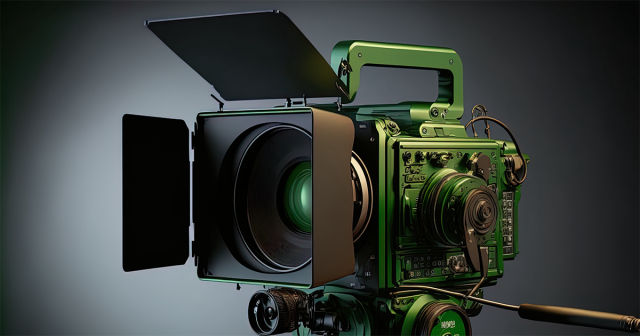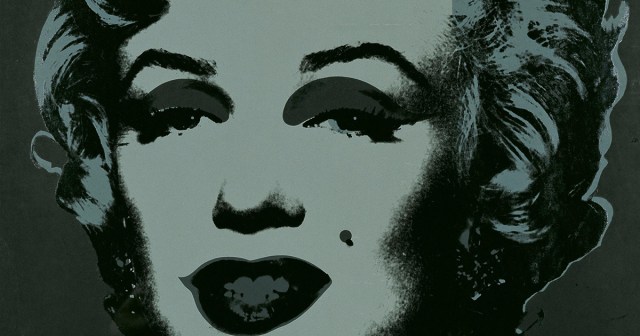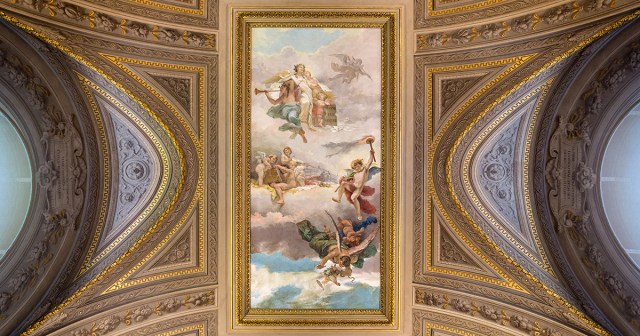
SEE IT AT NAB SHOW: NAB Show: Generative AI, Bringing Together the “Why” and “How”
READ MORE: How will A.I. generated films disrupt the film industry (Pinar Seyhan Demirdag)
The Hollywood studio system has never been in favor of risktaking. To fuel that machine, by and large the tentpole movies of franchise IP that get greenlit, reducing genres to superhero and horror movies, and squeezing out mid-budget indie fare with more original stories for $100 million budgets in the hope of recouping $1 billion.
Could artificial intelligence “save the day”? On the surface, that seems the worst possible idea… a machine replacing a “dream” factory, yet that is exactly what could come to pass if you take the positive view of AI tools that are rapidly gaining traction in all parts of the creative process.
AI and so-called AI-generated motion pictures represent a genuine threat to the Hollywood elite, says Pinar Seyhan Demirdag, the co-founder of Seyhan Lee, a production company specializing in artificial intelligence.
Just as the smartphone revolution put a high-quality camera in everyone’s hand, a swathe of “creative AI” apps will bring the production values of VFX, costumes, and exotic or fantastic locations into the grasp of any creator.
“The top-down triangle power pyramid will come to an end with creative AI tools,” Seyhan Demirdag argues in a post on Medium. “In the following years, creative AI will be taking all the limitations between your imagination and the production in the movie-making pipeline away, turning each filmmaker into their own personal production studio.”
AI motion pictures will be an artistic revolution facilitated by GPUs and parallel processors, she says.
“Creative AI tools are helping us emancipate our creative self-expression. You can now paint like a surrealist with Midjourney, mocap like a VFX studio with A.I. + Ebsynth, and give motion to avatars like a professional animator with Thin Plate Spline Motion Model. From an existential point of view, creative AI is giving us all the tools, talents, and arguments for us to make an idea conceptualized, funded, produced, and come alive.”
Of course, as it stands right now, AI is not able to generate any meaningful motion picture let alone with a compelling narrative. Most people think it is only a matter of time before that changes though.
“Welcoming creative AI tools with resistance would be similar to bashing digital cameras, cars, or other paradigm-shifting tools that improve the human experience and expand freedom.”
Pinar Seyhan Demirdag
It’s happening now, in fact. Demirdag traces how the revolution will happen before our eyes.
First to use AI in the open, she thinks, will be credits and title sequences because they “are the segments of the production pipeline with the most artistic freedom.
“As the outcomes of the creative AI models are still wild, wild west and are more artistic than realistic, this gives an excellent opportunity to spice up the title sequence market,”
Expect much more artistic AI-generated openers and title sequences in 2023, she predicts.
The second stage will be the integration of AI into Unreal Engine and volume stages for virtual production. Demirdag is at an advantage here since she teases that her company is currently doing just this on a stage in Los Angeles.
Concepting, storyboarding, and animatics will be the third phase. “Creative AI will liberate the storyboard artist from the repetitive, ‘revise til you die’ burden and cut down costs/production times.”
AI is already being applied to VFX and further impacts will occur “when artificial neural networks learn real-world physics, temporal cohesion, and filmmaking lingua franca.”
“Needless to say, there will be AI Netflixes carrying only generated content.”
Pinar Seyhan Demirdag
Text to video AI models are emerging including Facebook’s Make a Video (which is 2D computer generated) and some early-stage text-to-3D models including Dreamfusion, GET3D from Nvidia, CLIP Mesh, and CLIP Matrix by Nikolaj Jetchev.
“[Soon], we will witness these open-source models and new ones integrating light, coherent foreground and background generation, video-driven motion, performance, camera movement, generated depth maps, and all other aspects of the production pipeline.”
Demirdag foresees that some entity (Amazon, perhaps?) will combine all these scattered production pipeline tools “under one interoperable roof, like a virtual film generation studio.”
She suggests that studios like her own specializing in AI motion picture production will pop up, either serving traditional studios as vendors or merging with them.
“Needless to say, there will be AI Netflixes carrying only generated content,” she predicts.
Going further, “a generated-films-only streaming service will likely be disrupted by AI-generated dream states that can transition seamlessly between the personalized reactive show, game, social experience, and relaxing escape on a whim.”
“The top-down triangle power pyramid will come to an end with creative AI tools. In the following years, creative AI will be taking all the limitations between your imagination and the production in the movie-making pipeline away, turning each filmmaker into their own personal production studio.”
Pinar Seyhan Demirdag
It follows then that Hollywood is at a crossroads. Fail to adapt to new technology and wind up like Kodak, Nokia, Yahoo, Xerox, and Blockbuster or embrace AI for the benefits it can bring to cutting production costs and boosting creativity.
That’s after a period of futile resistance.
“At the beginning of the AI motion picture revolution we can expect some confusion, resistance, and lawsuits to arise from the studios at the beginning, similar to the chaos around sampling in music. But when the dust settles, the actors and directors will embrace AI, and they will get to make double the amount of money by working fewer hours as they will be licensing their ‘likeness’ and ‘style’ to generative films.”
Studios will develop novel ways to differentiate generated filmmaking from conventional filmmaking.
“Studios will push directors to create a more original look and feel for their movies. This effort to always try to be ahead of amateurs or semi-professionals making professional films will give way to the emergence of new trends in Hollywood.”
Her thesis is no outlier but part of a widespread belief that AI will automate some jobs from the industry, but will create just as many, and lead to potentially new forms of creative expression.
“Welcoming creative AI tools with resistance would be similar to bashing digital cameras, cars, or other paradigm-shifting tools that improve the human experience and expand freedom,” Demirdag says.
“I consider the limitation of human creativity a much bigger crime than giving people a creative self-expression explosion tool, like creative AI.”
Next, Listen to This
Person Plus Machine: The Future of Our Work? With Yoav Shoham and Rishad Tobaccowala
Listen to “Person Plus Machine: The Future Of Our Work?” on Spreaker.EXPLORING ARTIFICIAL INTELLIGENCE:
With nearly half of all media and media tech companies incorporating artificial intelligence into their operations or product lines, AI and machine learning tools are rapidly transforming content creation, delivery and consumption. Find out what you need to know with these essential insights curated from the NAB Amplify archives:
- AI Is Going Hard and It’s Going to Change Everything
- Thinking About AI (While AI Is Thinking About Everything)
- If AI Ethics Are So Important, Why Aren’t We Talking About Them?
- Superhumachine: The Debate at the Center of Deep Learning
- Deepfake AI: Broadcast Applications and Implications




